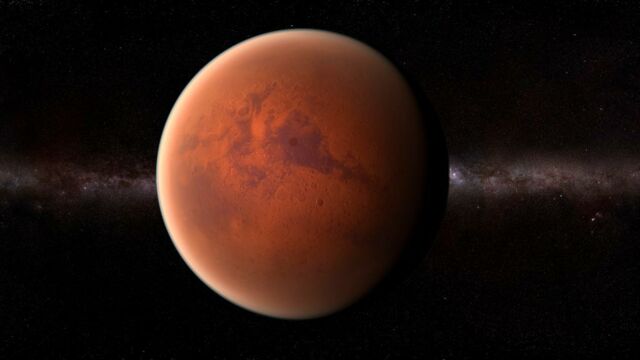The many researchers who are pooling their knowledge to operate the James Webb Space Telescope have no doubt said to themselves, 'who can do more can do less'. A true technological gem, the telescope is capable of observing distant celestial objects and taking sharper-than-ever pictures of galaxies light years away from Earth. This time, however, it was the Red Planet that the telescope was looking at.
Discover our latest podcast
A neighbour 'only' 1.5 million kilometres away
A telescope as powerful as the James Webb telescope should be able to observe anything and everything, right? Well, not really! Mars is so 'close' (about a distance of 1.5 million kilometres from Earth) that the light received by the telescope is too intense. This phenomenon is explained by the ESA researchers:
Webb's instruments are so sensitive that without special observing techniques, the intense infrared light from Mars is blinding, causing a phenomenon known as 'detector saturation'.
Astronomers have adapted to the extreme brightness of Mars by using very short exposures, measuring only part of the light that reaches the detectors and applying special data analysis techniques.
The NASA/ESA/CSA James #Webb Space Telescope captured its first images and spectra of #Mars on 5 September 2022 👉 https://t.co/B61gRDczbNpic.twitter.com/OcNldegob7
— ESA (@esa) September 19, 2022
Images to study the planet's atmosphere
This adjustment may explain why the images of Mars are not as impressive as those of distant galaxies. Captured on 5 September by the telescope's NIRCam, these images show the disc of Mars illuminated by the Sun: a close-up of the surface of Mars and a heat map of the planet. The ESA explained:
In the future, Webb will use these imaging and spectroscopy data to explore regional differences on the planet and to search for trace species in the atmosphere, including methane and hydrogen chloride.
Targeting Mars
After the Moon, Mars? As several rovers travel around the Red Planet and regularly share pictures of its surface (which generates a whole host of crazy theories), Mars is on everyone's lips. But when will we finally be able to walk on its red soil?
According to NASA, we may be able to send people to Mars within the next decade (2030-2040). Elon Musk is more optimistic and believes that we could visit our neighbour 'before the end of the 2020s'. But setting foot on the planet is one thing, establishing a colony is another. Meanwhile, it is estimated that it will not be possible to live on Mars in the medium and long term until at least 2060.
This article was translated from Gentside FR.
Sources used:
ESA - Mars is mighty in first Webb observations of Red Planet
Euronews - Elon Musk’s SpaceX COO says manned missions will reach Mars by 2030. NASA says otherwise
National Geographic - Why we explore Mars—and what decades of missions have revealed
Read more:
⋙ Nasa's James Webb Telescope: Stunning images from the world's most powerful space telescope
⋙ NASA finally reveals damage done to James Webb Telescope after being hit by meteoroids
⋙ NASA's James Webb Space Telescope reveals a new exoplanet with CO2, is it habitable for humans?















